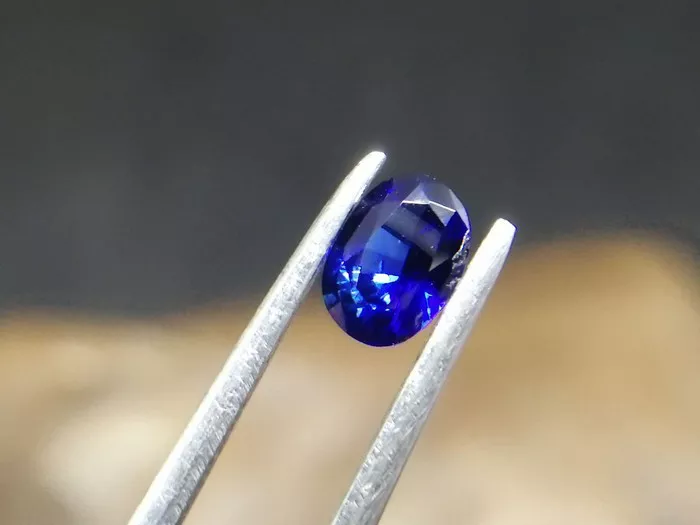Sapphires are among the most coveted gemstones in the world, prized for their stunning beauty, exceptional hardness, and rich symbolism. While sapphires are often associated with the color blue, they actually come in a wide range of colors, including pink, yellow, green, purple, orange, and colorless. In this article, we’ll explore the rarity of sapphires and what makes them so highly prized in the world of gemstones.
Introduction to Sapphires
Sapphires belong to the corundum family of minerals, which also includes rubies. Corundum is composed of aluminum oxide and is one of the hardest minerals on Earth, second only to diamond on the Mohs scale of mineral hardness. This exceptional hardness, combined with sapphire’s brilliance and durability, makes it an ideal choice for fine jewelry and engagement rings.
The name “sapphire” is derived from the Latin word “sapphirus,” which means “blue stone.” Historically, sapphires have been revered for their celestial blue hues and have been associated with royalty, wisdom, and divine protection in many cultures throughout history. Today, sapphires are treasured for their beauty and versatility, with each color variety offering its own unique charm and allure.
Factors Affecting Sapphire Rarity
Several factors contribute to the rarity of sapphires, including color, clarity, size, and geographic origin. Let’s explore each of these factors in more detail:
Color: The color of a sapphire is the most important factor in determining its rarity and value. While blue sapphires are the most well-known and sought-after variety, sapphires come in a range of colors, each with its own unique rarity and desirability. For example, pink sapphires, particularly those with intense, vivid hues, are considered rare and valuable. Similarly, yellow sapphires, also known as “pukhraj” in some cultures, are highly prized for their sunny, golden tones.
Clarity: Clarity refers to the presence of internal characteristics, known as inclusions, within the sapphire. While some inclusions are acceptable and may even enhance the stone’s beauty, high-quality sapphires exhibit excellent clarity and transparency. Stones with minimal visible inclusions are considered rare and command higher prices in the market.
Size: The size of a sapphire can also affect its rarity and value. Larger sapphires are rarer and thus more valuable than smaller stones. However, the price per carat tends to increase exponentially as the carat weight of the sapphire increases, meaning that larger stones can be significantly more expensive on a per-carat basis.
Geographic Origin: The geographic origin of a sapphire can influence its rarity and desirability. Certain sources are known for producing sapphires with specific colors or characteristics that are highly prized in the market. For example, Kashmir sapphires from India are renowned for their velvety blue hues and exceptional clarity, making them some of the rarest and most valuable sapphires in the world. Other notable sources of high-quality sapphires include Myanmar (Burma), Sri Lanka (formerly known as Ceylon), Madagascar, and Australia.
How Rare Are Sapphires?
While blue sapphires are the most iconic and widely recognized variety, other colors of sapphire can be equally rare and valuable. Let’s explore the rarity of some of the most sought-after sapphire colors:
Blue Sapphire: Blue sapphires are the most traditional and highly prized variety of sapphire. The most valuable blue sapphires exhibit a pure, intense blue color with excellent saturation and clarity. Kashmir sapphires, from the Kashmir region of India, are considered the rarest and most valuable blue sapphires due to their velvety blue hues and exceptional clarity. Other notable sources of high-quality blue sapphires include Myanmar (Burma) and Sri Lanka (Ceylon).
Pink Sapphire: Pink sapphires are prized for their delicate, feminine hues and are considered rare and valuable. The most valuable pink sapphires exhibit a vivid, saturated pink color with excellent clarity and transparency. Madagascar is known for producing some of the finest pink sapphires, particularly those with intense, bubblegum-pink hues.
Yellow Sapphire: Yellow sapphires, also known as “pukhraj” in some cultures, are highly prized for their sunny, golden tones. The most valuable yellow sapphires exhibit a pure, intense yellow color with excellent clarity and transparency. Sri Lanka (Ceylon) is known for producing some of the finest yellow sapphires, particularly those with vibrant lemon-yellow hues.
Padparadscha Sapphire: Padparadscha sapphires are a rare and highly coveted variety known for their unique blend of pink and orange hues. The name “padparadscha” is derived from the Sinhalese word for lotus blossom, reflecting the gemstone’s delicate coloration. Padparadscha sapphires are exceptionally rare and command premium prices in the market. Sri Lanka (Ceylon) is the primary source of padparadscha sapphires, although they are also found in Madagascar and Tanzania.
Conclusion
In conclusion, sapphires are rare and highly prized gemstones that come in a wide range of colors, each with its own unique rarity and desirability. While blue sapphires are the most iconic and sought-after variety, other colors such as pink, yellow, and padparadscha are equally rare and valuable. Factors such as color, clarity, size, and geographic origin all contribute to the rarity and value of sapphires, with certain sources known for producing the finest specimens. Whether you’re seeking a classic blue sapphire or a rare padparadscha, sapphires offer a timeless beauty and allure that continue to captivate gemstone enthusiasts and collectors around the world.


